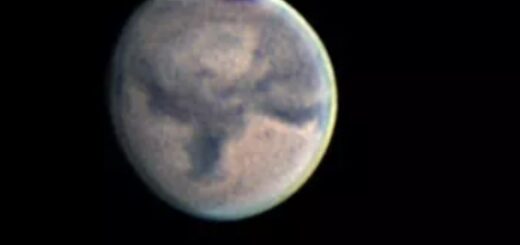The Next 209 Seconds Will Make You Question Your Entire Existence!

The universe is perhaps one of the greatest enigmas which humanity will never solve. Everything around us is a mystery, and as we advanced as a civilization tighter, we realize how little we know about where we are located in space.
The universe—if there’s only one and not countless more—expends at a staggering rate of around 43 miles per second per MEGAPRASEC. It’s even hard to imagine how fast that is.
In comparisons, our farthest space probe from Earth, the Voyager 1, is traveling a million miles a day approximately, and after nearly 40 years, the spacecraft has barely left our solar system.
But everything is in movement, nothing is static.
In fact, as you are reading this, the Earth revolves around its own axis; and orbits the sun, the sun moves through space at a staggering 792,000 kilometers per hour around the galactic center, and our universe moves at a mind-bending 2.1 million kilometers per hour.
In fact, our galaxy is being pushed and pulled by MYSTERIOUS forces in the universe.
A new study recently published in Nature Astronomy describes a previously UNKNOWN, supermassive region in our extragalactic neighborhood largely empty of galaxies, which is exerting a REPELLING FORCE on our local group of galaxies. Previously, experts thought that our galaxy was speeding through the universe because it was being pulled to a specific, dense part of the universe due to that region’s gravity.
However, a new study has shown differently.
It turns out that the Milky Way is being swung across the universe by a so-called EXTRAGALACTIC VOID, in a process scientists call a kind of galactic tug-of-war, at a mind-bending speed of 1.2 Million miles per hour.
It wasn’t until recently that scientists managed to figure out where we are located in space. Our cosmic neighborhood. According to astronomers, The Laniakea Supercluster is the galaxy supercluster that is home to the Milky Way and 100,000 other nearby galaxies. The Laniakea Supercluster encompasses 100,000 galaxies stretched out over 160 megaparsecs (520 million light-years). It has the approximate mass of 1017 solar masses, or a hundred thousand times that of our galaxy, which is almost the same as that of the Horologium Supercluster. It consists of four subparts, which were known previously as separate superclusters.
But that’s really small if you zoom out further away. There are about 10 billion galaxies in the observable universe! The number of stars in a galaxy varies, but assuming an average of 100 billion stars per galaxy means that there are about 1,000,000,000,000,000,000,000 (that’s 1 billion trillion) stars in the observable universe.
Every time you get upset about something small, just remember this:
Video by: BuzzFeedBlue



 Creators of mankind
Creators of mankind Description of “Tall white aliens”
Description of “Tall white aliens” Where they came from?
Where they came from? About hostile civilizations
About hostile civilizations The war for the Earth
The war for the Earth “Tall white aliens” about eternal life
“Tall white aliens” about eternal life Video: “Nordic aliens”
Video: “Nordic aliens” Aliens
Aliens Alien encounters
Alien encounters The aliens base
The aliens base UFO
UFO Technology UFO
Technology UFO Underground civilization
Underground civilization Ancient alien artifacts
Ancient alien artifacts Military and UFO
Military and UFO Mysteries and hypotheses
Mysteries and hypotheses Scientific facts
Scientific facts


















